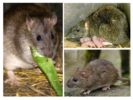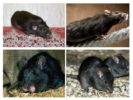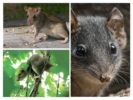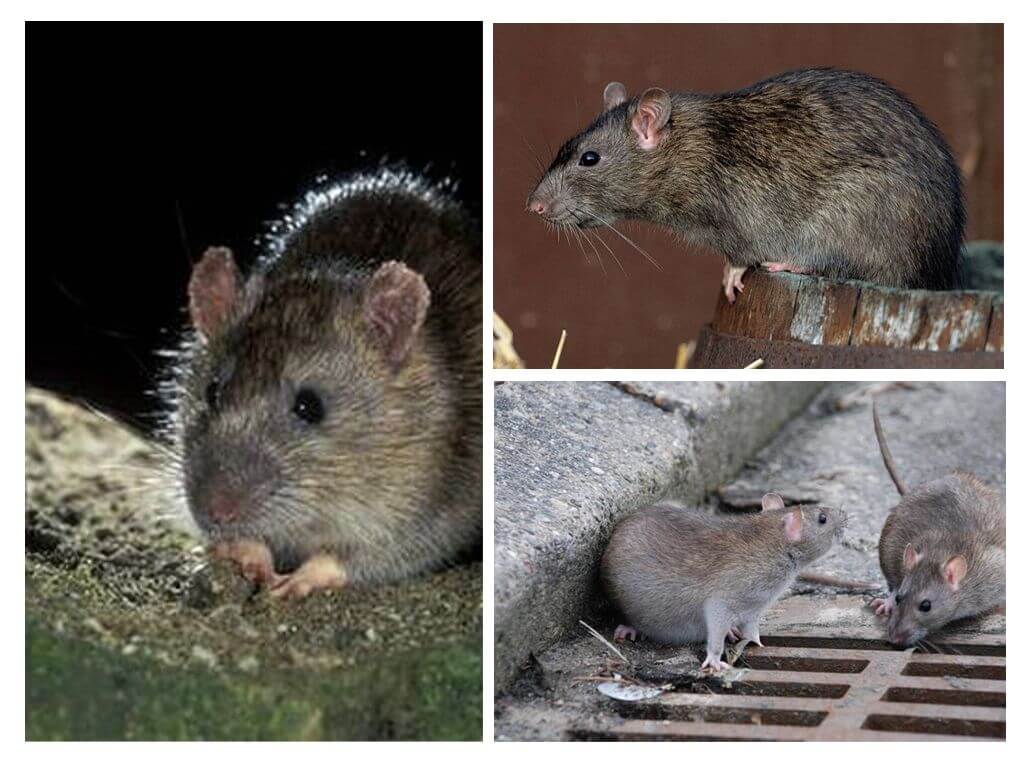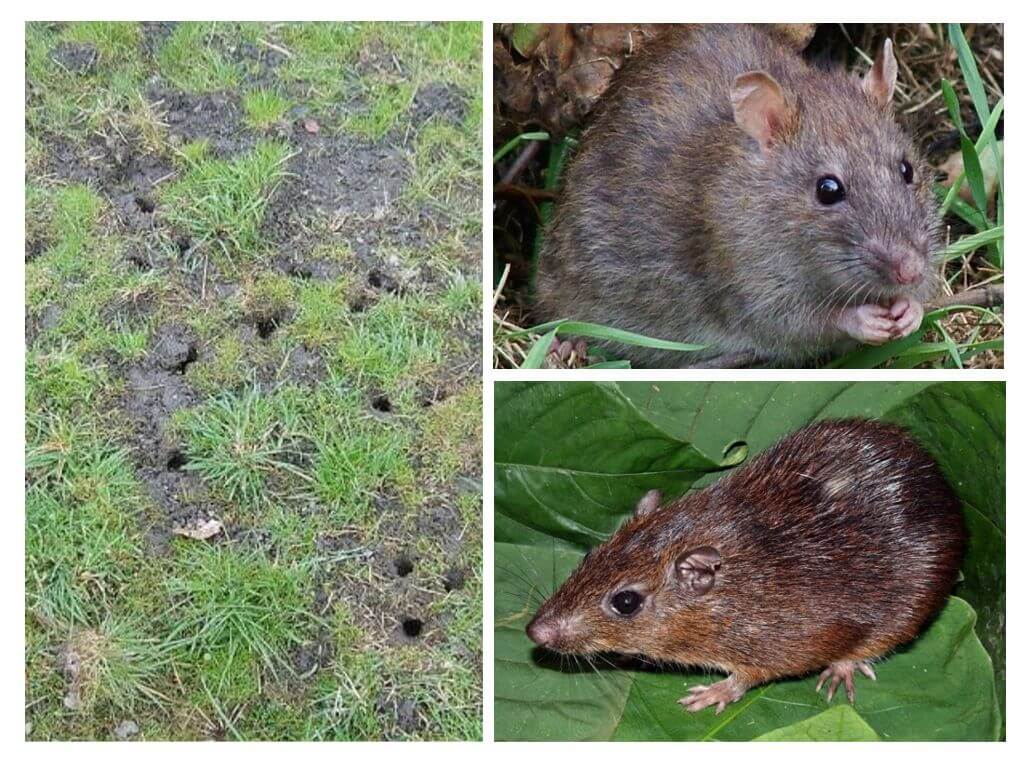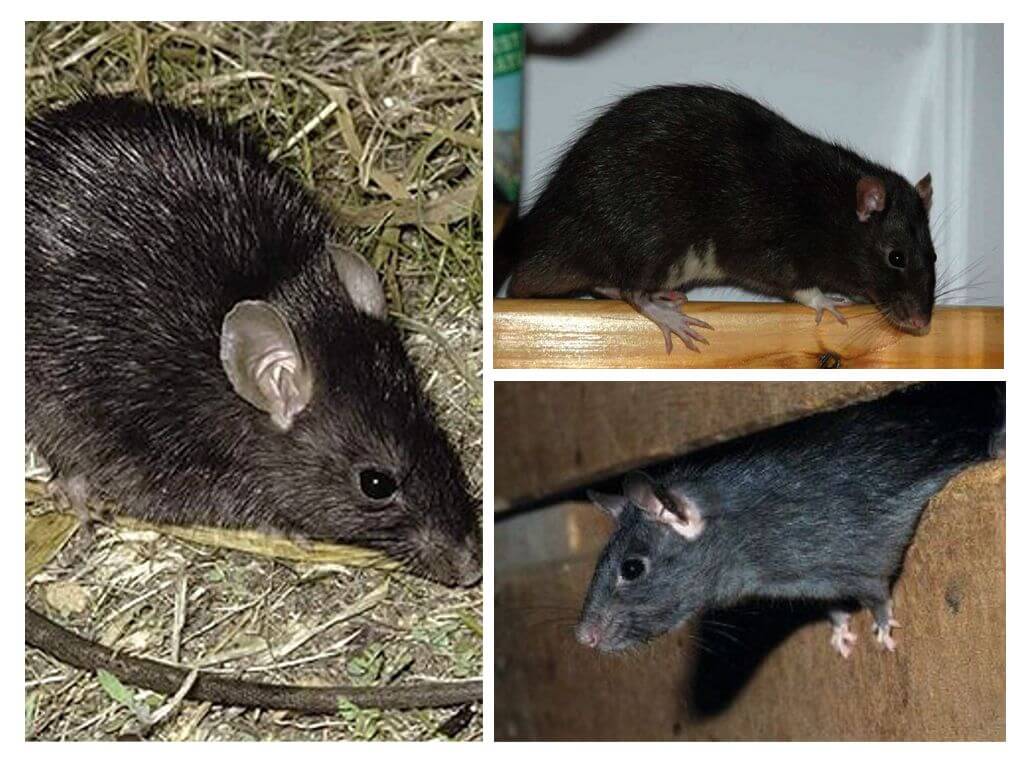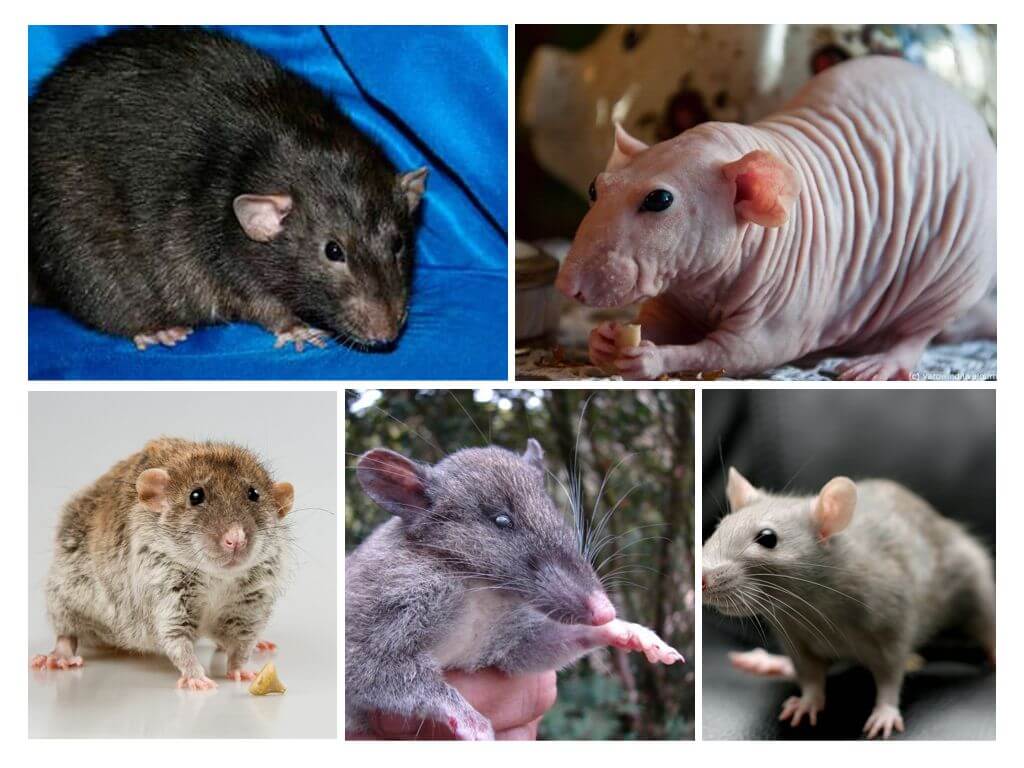- Gray rat
- Black rat
- Turkestan rat
Every inhabitant of our planet knows about rats. Rodents are found in rural areas, urban buildings. They annoy people in private houses, apartments of high-rise buildings. Wild rats periodically settle in human possessions, do not behave in the best way - they spoil furniture, destroy food supplies. Besides rats spread diseases. On the territory of our country 3 species of wild rats live - gray, or pasyuk, blackTurkestan. For keeping at home, a decorative Edwards rat is imported. Photos of wild rats can be seen below.
Pasyuk
How wild rats look, even children know. Pests can often be found near the house, near trash cans, in damp porches. Private traders see rats in the garden, gardens, outbuildings, sheds, chicken coops.
Appearance
Pasyuk, he is also a gray rat, the largest rodent among all the wild mouse-like in our area. What are the rats in size, interested in many people. Since there are legends about gray monsters the size of a dog.
The body length, excluding the tail, reaches 35 cm. The weight of an adult is from 400 to 500 g. According to some sources, the biggest rat can weigh up to 0.900 kg. The tail occupies 80% of the body length. Rounded, barely noticeable ears, oblong muzzle, round eyes on the sides.
The coat is short, smooth. Pasyuk colors vary depending on the place of residence. You can meet the rodent gray, ocher, red. All of them belong to the same Pasyuk family.
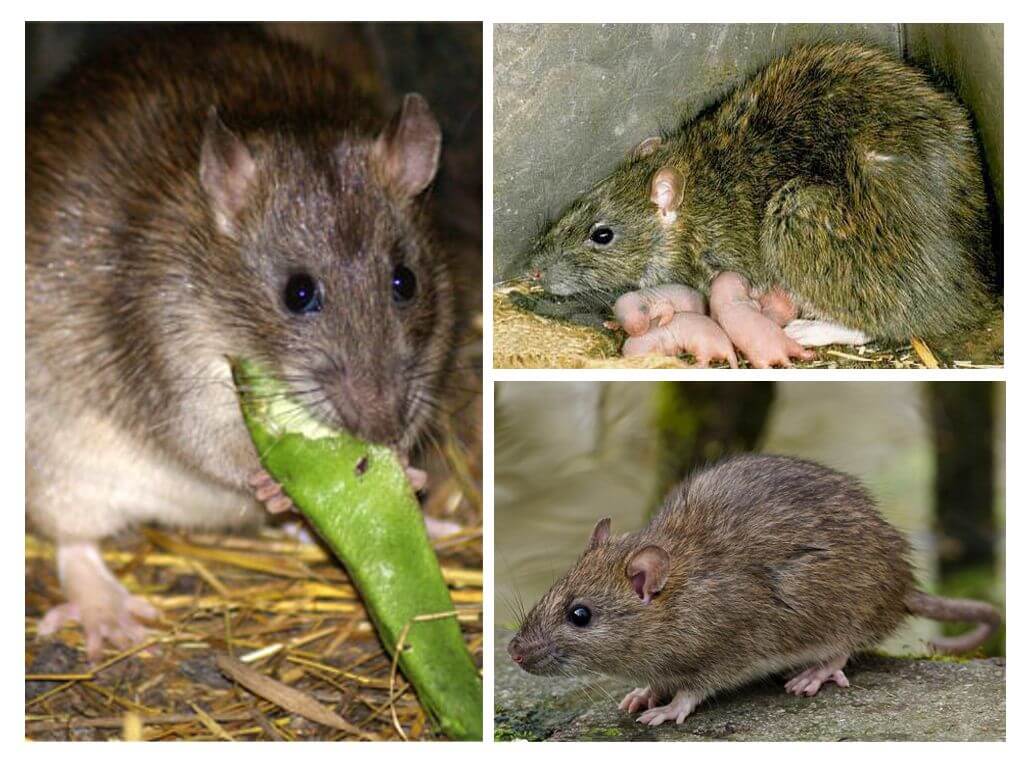
The rodent has 2 types of teeth:
- 12 pieces of molars, 3 on each side on both jaws;
- 4 incisors, a pair on each jaw.
The molars are cut from the first days of life, after 20 days, incisors appear, which continue to grow for 50 days. They have a characteristic yellow color, durable enamel. By means of incisors, the predator sharpenes hard objects and gnaws bones of other animals.
Power Features
For a day, the rat needs to eat up to 50 g of a variety of foods. Be sure to replenish the body with protein.
- What wild rats eat at home is understandable. They are almost omnivores. Eat grain, cereals, vegetables, fruits, tree bark. They drag eggs, destroy chickens, kittens, puppies. Nibble on paper, cardboard, plastic, brick, wood, burlap, concrete structures.
- In the wild, the pasuk hunts for small mammals, amphibians, mollusks, fish. Wild rat is good at swimming, builds holes near water bodies. Although he prefers to be more on land. In the water, the pasuk can swim for 70 hours, can dive, and obtains food for itself at a depth.
- Pasuk ruins the nests of birds. It hunts for small rodents, in emergency situations it eats its relatives. The rat does not tolerate hunger. Without food, the animal dies on day 4. But nature made sure that the animal was rarely left without food. An omnivorous creature adapts to any conditions of existence. In the city it feeds on waste, gnaws weak dogs, cats.
- From plant foods eats everything with pleasure. Prefers grain, juicy parts of the plant. The rodent never makes stocks. Lives today.
On a note!
Gray rats do not climb well. They prefer a solid, solid surface under their feet. Satisfied with the food, which is located at the foot. But they can climb onto the high shelves of a locker in a house.
Breeding
Pasyuki well tolerate heat, cold. Everywhere find secluded places. Under favorable conditions, breed all year round, reproduce 8 litters. In each of them about 10 baby rats. Pregnancy of the female lasts 24 days.
Behavior
Rodents are very aggressive creatures. Rats attack humansfinding themselves cornered. Do not give up in battle with dogs, cats, leaving deep bites and scratches on their bodies. Rodents are able to bite a bedridden person, a sleepy child. If there are a lot of pasyuki, boldly rush at the enemy, large animals - a pig, a cow, a goat.
Methods of struggle
Rat extermination is carried out in different ways, methods. Set traps rat traps, poison with toxic substances, repel the smell of plants, strongly smelling substances. Difficulties often arise in connection with the ability of rodents to feel the danger, bypass the bait. Despite the bad vision in rats, they have good visual memory, developed mental activity. Having sat his relative in a trap, he will not repeat his mistakes. If a relative's death is detected after a certain food, she herself will not touch it.
Interesting!
At one of the forums, the reader shared her impression of the hunt for rats. Wound up in a chicken coop, one of them was wounded with a pitchfork, left to pick up later. When they came for the rat, they saw an interesting picture - the rest of the relatives tried to save her life, to drag him away.
Black rats
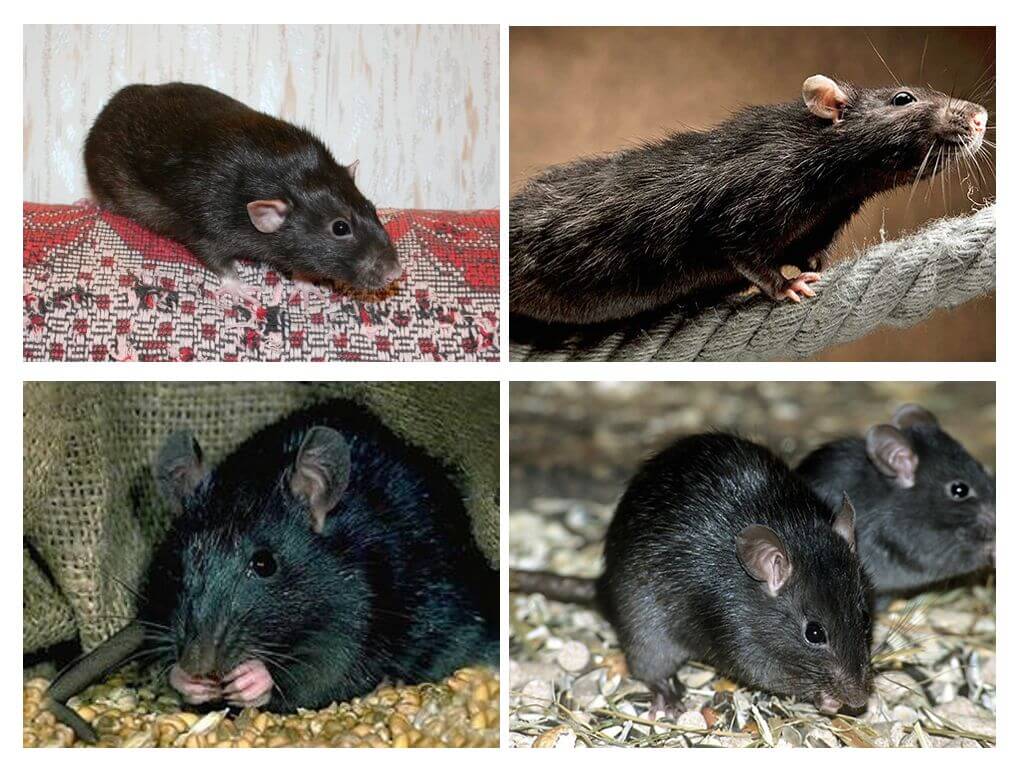
These representatives of the murine family are not so aggressive, inferior in size, superior in dexterity.
Appearance
The body of a black rat reaches a size of 22 cm. An adult weighs about 300 g. Long tail rat about 30 cm, densely covered with hairs. The ears are somewhat wider and larger than the pasuk, the muzzle is sharper. The color of the rat is diverse - from black, brown, to gray. On the sides it is always lighter, up to white.
Habitat
The thermophilic creature prefers to settle closer to man. In his possessions, the rodent finds heat, water, food. The ability to actively resettle is much lower than that of the pasyuk. Usually distributed forcibly - transported with food in transport. Prefer watercraft, ships.
Interesting!
In the old days, when roofs were made of straw, black rats built nests there. Another name for this type of rodent is the roofing rat. They are rare in sewers, as they are always in the minority and become prey for pasyuki.
He does not dig burrows in the earth, builds a dwelling in the hollows of trees, builds nests from twigs, like birds.
Behavior
The black rat leads a nocturnal lifestyle, prefers to climb trees, roam the grass. Swims badly, afraid of water. At the sight of danger, he tries to quickly hide. Does not fight with cats, dogs, does not attack a person.
They live in large flocks in which a hierarchy is established with a male leader and three dominant females. The flock is home to adults, young animals.
Breeding
Heat-loving creatures do not reproduce so actively. 3 litters per year are reproduced. Each has about 11 cubs. The breeding peak occurs at the end of summer, the beginning of autumn. Pregnancy lasts from 20 to 30 days.
Adults always take care of their cubs, even after growing up they stick together. Cubs become independent in a month, sexually mature in 3-5 months. In the wild, a black rat lives only a year. The mortality rate is 95%. At home, can live up to 4 years.
Power Features
You can't call a black rat a predator. Rodent prefers plant foods. Satisfied with small ones - nuts, root crops, roots, tree bark, cereals, cereals.Protein food is not as important as for a gray rat. It can enjoy invertebrates - worms, bugs, snails, caterpillars.
Pest control
Black rats are capable of destroying grain crops, stocks in barns. To control pests, similar methods are used. Getting rid of black rats is a lot easier than getting rid of pasyuki.
Turkestan rat
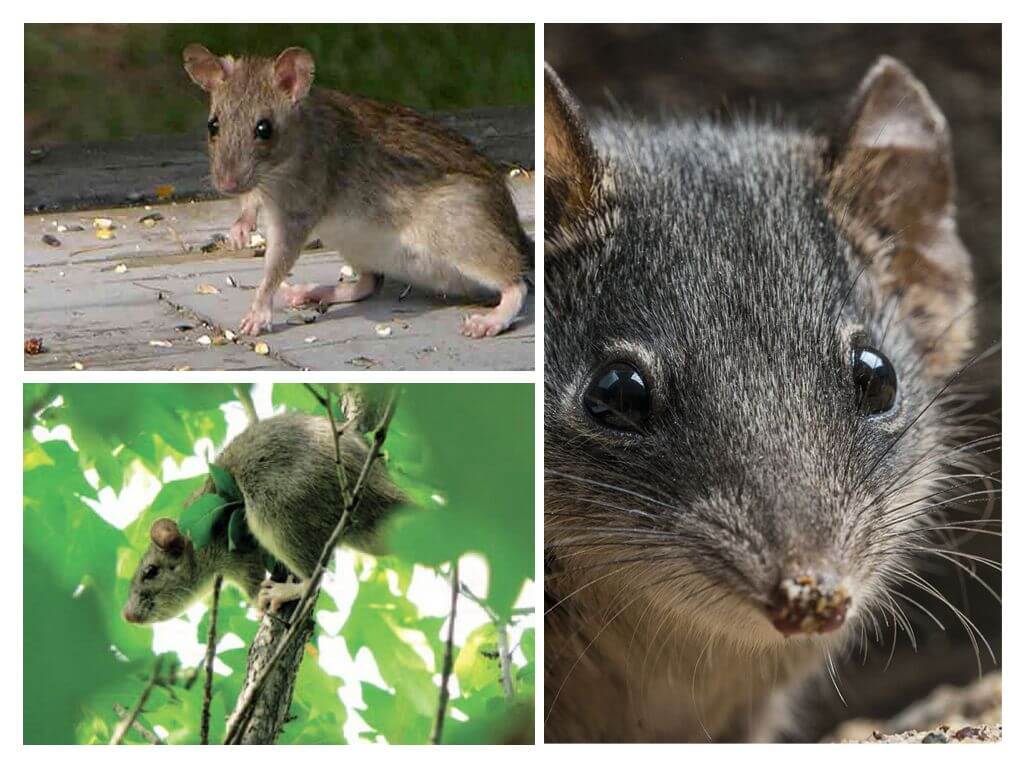
It is a cross between a pasuk, a black rat. It is found in the wild, found in homes.
Appearance
The length of the body reaches 23 cm, weight - about 300 g. The tail is almost equal to the size of the body - 21 cm. The muzzle is blunt, wide, like a pasuk. Ears well defined, round, like a black rat. The color of the upper body is red, brown, buffy, brown, gray is found. On the sides of the body, the hairs are longer with a whitish base, brown tips.
Habitat
The largest accumulation of rats can be found in mountainous areas in deciduous forests. Prefers nuts, fruit trees. It settles in shrubs, wood mounds, rocky ledges, exits to the river. With the onset of cold weather, it gets into private houses of people, multi-storey buildings. Turkestan rat often settles in barns, mills, warehouses.
They like to make nests in narrow gaps between the ceiling and the roof, periodically protrude their faces from there, run around the attic at night. Make holes in the clay floor. In the wild, lives in hollows, burrows of other animals, caves, under stones.
Power Features
The rat prefers plant foods. It feeds on juicy parts of plants, seeds, seeds, nuts, bulbs, fruits, gnaws on the bark of trees. Can feast on bird eggs, chicks. Leads a nocturnal lifestyle. Trying not to show people in the eye. Unlike other representatives of the species, it makes significant reserves for the winter. About 14 kg of nuts and 7 kg of apples were found in rat storages.
Breeding
Turkestan rat breeds in the warm season. In natural conditions brings 4 litters of 8 cubs. In winter, fertility decreases.
Behavior
Rodents are not aggressive. They prefer to flee, rather than engage in battle with the enemy. Behave very carefully. With an abundance of food in the wild, they are not interested in human possessions, they themselves leave the house with the onset of heat.
Fight
Rodents do huge damage to gardening. Climb trees well, gnaw bark, young shoots, fruits. During the season, they can destroy about 25% of the nut crop. To exterminate pests, traps are used, traps, poison for rats, folk methods.
The most unpleasant, dangerous wild rat is the pasuk. She feels great in any conditions, has a brutal appetite, aggressive disposition. Numerous troops are difficult to exterminate, difficult to expel.
